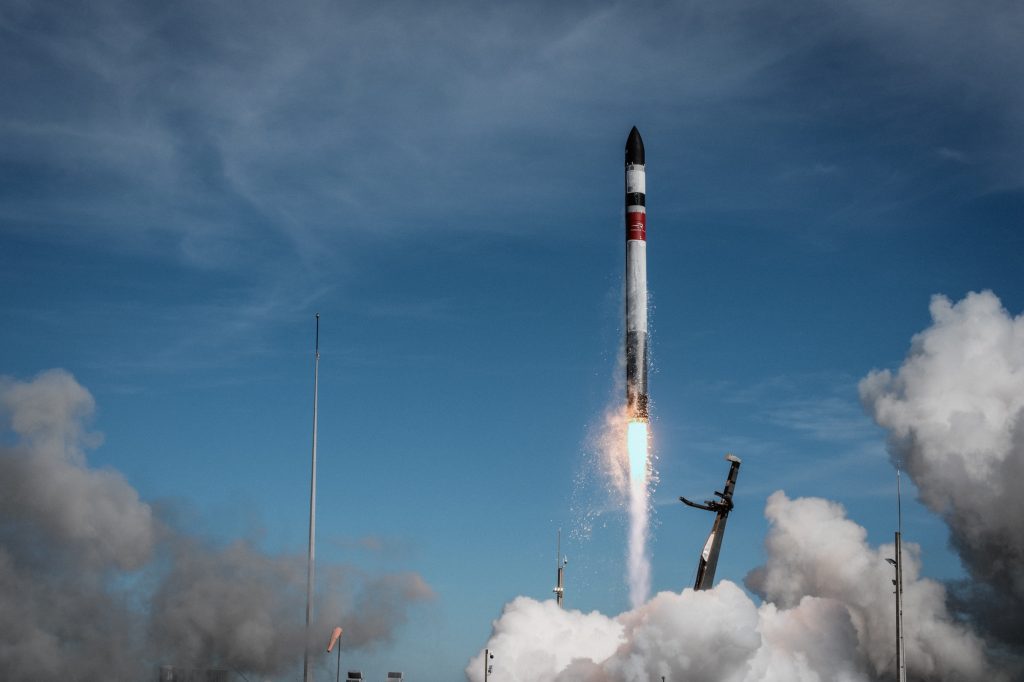WASHINGTON — Rocket Lab sent a small South Korean satellite and a NASA solar sail experiment into space on April 23, marking the company's fifth launch of the year.
An Electron rocket took off from Rocket Lab’s Launch Complex 1 in New Zealand at 6:32 p.m. Eastern after a 20-minute delay due to a ground equipment issue. The rocket’s kick stage, released from the upper stage nine minutes into the flight, performed maneuvers to place its two payloads into separate orbits.
The kick stage initially entered a circular orbit at an altitude of 520 kilometers, deployed the NEONSAT-1 spacecraft about 50 minutes after liftoff, and then moved into a 1,000-kilometer orbit to release the ACS3 satellite one hour and 45 minutes after liftoff.
The main payload, NEONSAT-1, is an imaging satellite weighing around 100 kilograms. It is part of a group of 11 spacecraft known as the New-space Earth Observation Satellite Constellation for National Safety, with South Korea's Nuri rocket set to launch the other 10 in 2026 and 2027.
Developed by South Korea’s Satellite Technology Research Center at the Korea Advanced Institute of Science and Technology, the satellite is equipped with a camera system capable of capturing one-meter resolution images. The South Korean government plans to utilize the satellite and the larger constellation for civil and national security purposes.
ACS3, also known as the Advanced Composite Solar Sail System, is a 12U cubesat designed at NASA’s Ames Research Center using a bus provided by NanoAvionics. Following post-launch checks, the spacecraft will unfurl a solar sail spanning 80 square meters.
The primary goal of ACS3 is to evaluate new, lightweight booms made of composite materials and a sail deployment system. If the sail unfurls successfully, the spacecraft will then test its maneuverability using it. This necessitated placing ACS3 in a higher orbit to minimize atmospheric drag effects.
“The hope is that the new technologies demonstrated by this spacecraft will inspire others to utilize them in innovative ways,” said Alan Rhodes, lead systems engineer for ACS3 at NASA Ames, in a pre-launch statement.
This launch marked the fifth flight of the Electron rocket this year, following a one-month hiatus after a mission for the National Reconnaissance Office on March 21. a mission for the National Reconnaissance Office on March 21 from Rocket Lab’s Launch Complex 2 in Virginia. Company executives stated in a February earnings call that the company has 22 Electron launches scheduled for the year, including two of its HASTE suborbital version. Rocket Lab successfully launched a small South Korean satellite and a NASA solar sail experiment on April 23.









